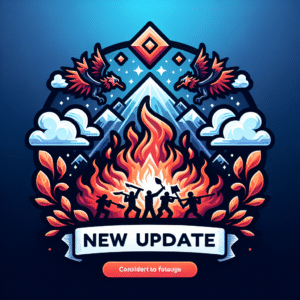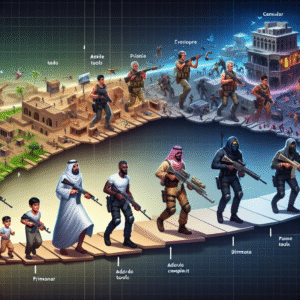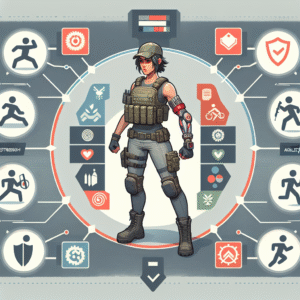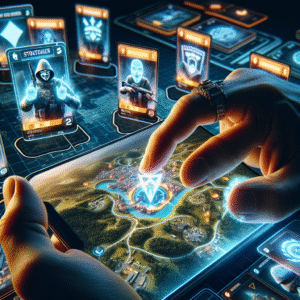Candy Crush Saga: Balancing Fun and Challenge
Candy Crush Saga is a ubiquitous name in the realm of mobile gaming, celebrated for its vivid graphics, simple mechanics, and an addictive gameplay loop. Since its launch in 2012 by King, Candy Crush Saga has become a cultural phenomenon, downloaded billions of times across the globe. The game effortlessly combines elements of fun and challenge to retain player interest, a delicate balance that game designers constantly strive to maintain.
At its core, Candy Crush Saga is a match-three puzzle game where players swap adjacent candies on a board to create chains of three or more candies of the same color. These chains disappear, earning the player points and causing new candies to cascade down the board. The captivating blend of vibrant visuals and auditory rewards contributes significantly to the game’s universal appeal. However, beyond the colorful exterior lies a deeply strategic layer, offering a challenge that keeps players coming back repeatedly.
One of the key facets in maintaining the balance between fun and challenge in Candy Crush Saga is its level design. Each level of the game presents a unique puzzle with specific goals the player must achieve within a limited number of moves. Some levels require the player to score a certain number of points, while others challenge players to clear jelly-covered tiles or bring special ingredients to the bottom of the board. These varying objectives ensure that the gameplay remains fresh and engaging. As players progress, the complexity of the puzzles increases, requiring better strategic thinking and planning.
Furthermore, the game employs a well-crafted difficulty curve. The early levels serve as a gentle introduction to the game’s mechanics, gradually familiarizing players with power-ups, special candy combinations, and unique obstacles. As players become more adept, the game introduces more complex puzzles and intricate candy arrangements, requiring advanced strategy and foresight. This gradual rise in difficulty is crucial; it prevents new players from feeling overwhelmed while simultaneously offering seasoned players the challenge they seek.
The social aspect of Candy Crush Saga also plays a pivotal role in keeping the game fun and challenging. Players can connect the game to their Facebook profiles, allowing them to see their friends’ progress, share extra lives, or compete for high scores on particular levels. This competitive social element encourages interaction and serves as a motivational tool for players to continue improving. Moreover, players can join or create teams, adding a cooperative component to the competition. These features help build a community around the game, enhancing the player experience and further balancing the game’s challenges with social fun.
Another essential element contributing to the balance of fun and challenge is the game’s rewarding system. Candy Crush Saga offers various boosters and power-ups, which can help players complete difficult levels. These boosters range from simple advantages like extra moves to powerful tools that can remove entire rows or columns of candies. King, the game’s developer, strategically dispenses these rewards through daily spins, challenges, and purchases, assuring players that help is always just within reach without overwhelming the fundamental puzzle experience.
However, the inclusion of microtransactions cannot be ignored when discussing the balance of fun in Candy Crush Saga. Like many free-to-play games, Candy Crush offers players the opportunity to purchase in-game currency and boosters using real money. While the game is still playable without these purchases, microtransactions present a dual challenge; they must appeal to players without creating imbalances that disrupt the game’s strategic depth. King has addressed this by offering opportunities to earn boosts through gameplay itself, maintaining a fair competition for all players, regardless of monetary investment.
Candy Crush Saga’s sound design also deserves recognition in the discussion of fun and challenge balance. The auditory feedback of completing a level, the sound of candies being crushed, and the quintessential voice prompts celebrate the player’s achievements, adding a satisfying layer to every game’s outcome. This sensory reward system can make even the tiniest of victories in a tough level feel gratifying, encouraging players to push through challenging levels to experience this satisfaction regularly.
The game’s art and design support the balance by keeping players visually engaged. Bright, bold colors and whimsical animations make each level inviting, ensuring players remain positive even when faced with difficult challenges. The boards often have themes, which change with different episodes in the game, offering a sense of progression and novelty. This visual charm is not just a cosmetic appeal but a fundamental aspect of keeping the gaming experience light and fun even as difficulty rises.
A critical facet of Candy Crush’s enduring popularity is its constant updates and seasonal events, which are meticulously designed to keep the player base engaged. These temporary events often introduce new game modes, limited-time challenges, and exclusive rewards, injecting freshness into the game. They serve as a reminder that there is always something new to explore or achieve, subtly distracting from the repetitiveness that can plague similar games. The presence of these events adds layers to the experience, preventing the player from feeling stagnated or fatigued by similar challenges.
Advanced players often discuss strategies and share tips online, creating a repository of knowledge that new or struggling players can explore. This community-driven aspect subtly adds another layer to the balance. It encourages social learning and collaboration, offering insights and advice that enhance player success across the more challenging levels, keeping players connected and invested in the game.
Moreover, the game’s cross-platform capability allows players to seamlessly transition across devices without losing progress. This flexibility ensures players can engage with the game at their convenience, such as in short bursts on a mobile device during transit or more extended sessions on a tablet at home. This seamless playing experience contributes to the game’s accessibility and overall enjoyment.
Critically examining the psychology behind Candy Crush’s design reveals intentional elements that drive motivation. The use of operant conditioning principles rewards players intermittently, making them more likely to continue playing in anticipation of these rewards. The need to complete “just one more level” taps into a loop that provides satisfaction in small doses, ensuring players remain trapped within the game’s environment, balancing both fun and challenge inherently.
Candy Crush Saga avoids monotony trough its diverse level formats and board layouts. With more than 10,000 levels available, the game meticulously ensures that each level offers a unique challenge. Special obstacles such as licorice swirls, chocolate fountains, and multi-layered blockers are introduced over time, keeping the gameplay complex and varied. By constantly refreshing the mechanics and objectives, King effectively mitigates any feelings of tediousness.
In conclusion, Candy Crush Saga thrives on a masterful blend of fun and challenge through its well-considered design elements. From level intricacy, social connectivity, sensory feedback, and strategic difficulty ramps to regular infusions of new content, every aspect works cohesively to enhance player engagement. Game designers aiming to create compelling experiences can take cues from the intelligent systems woven throughout Candy Crush Saga’s fabric. Whether through its social integration or psychological triggers, the game has established a delicate equilibrium that has delighted millions worldwide, becoming a benchmark in mobile puzzle gaming.











Post Comment